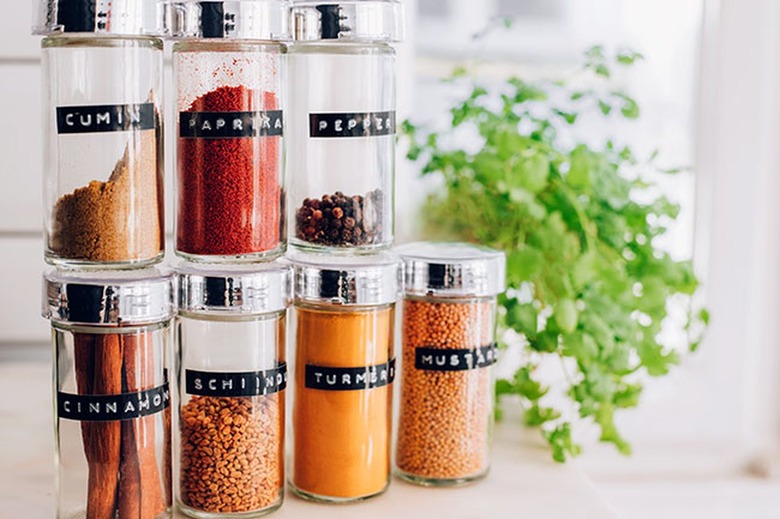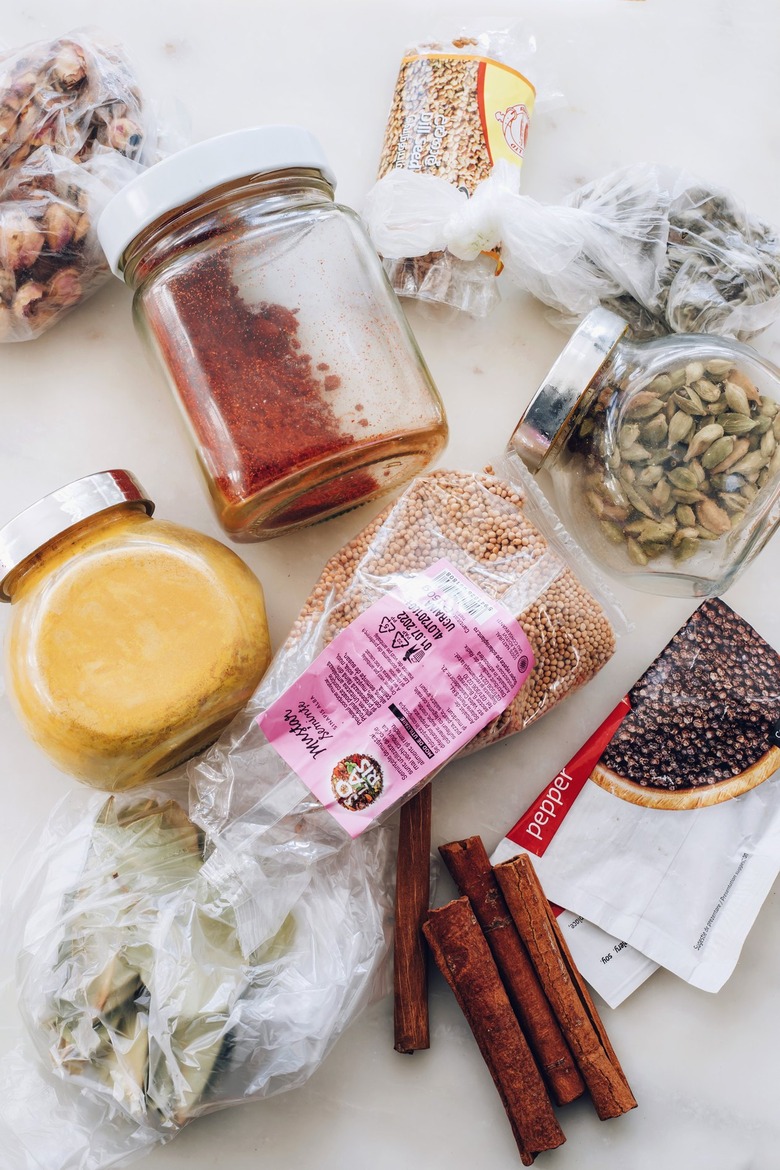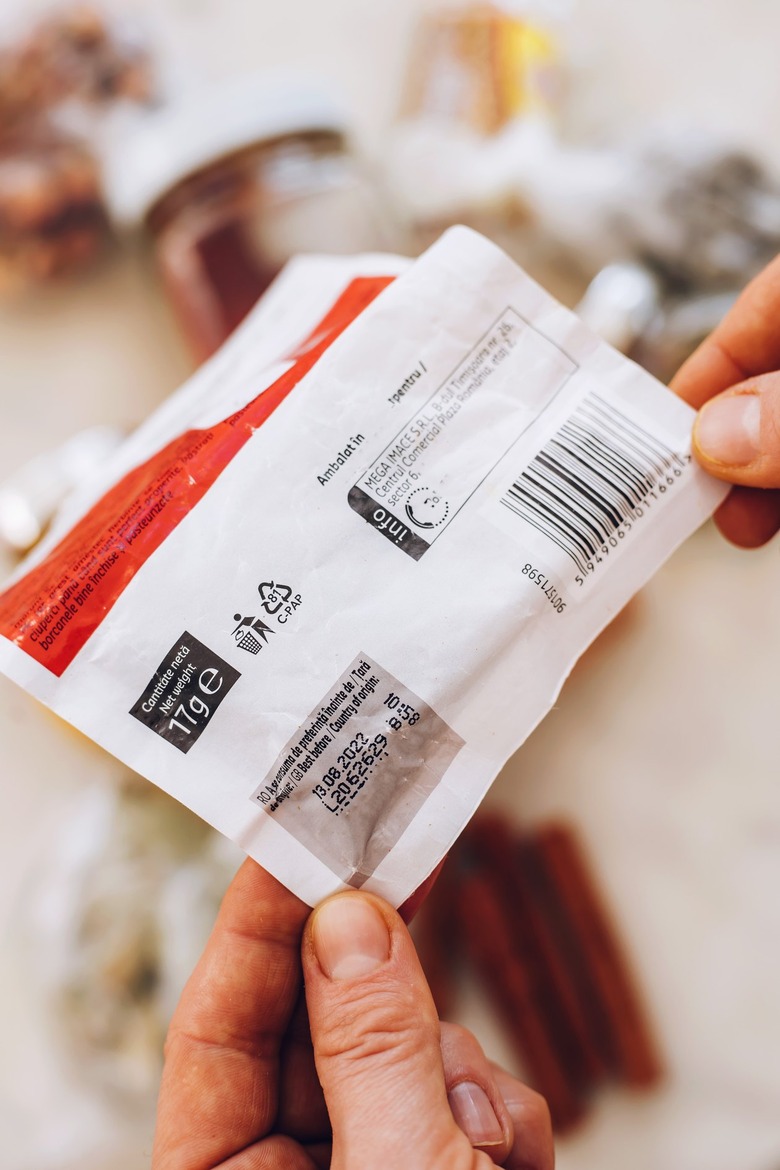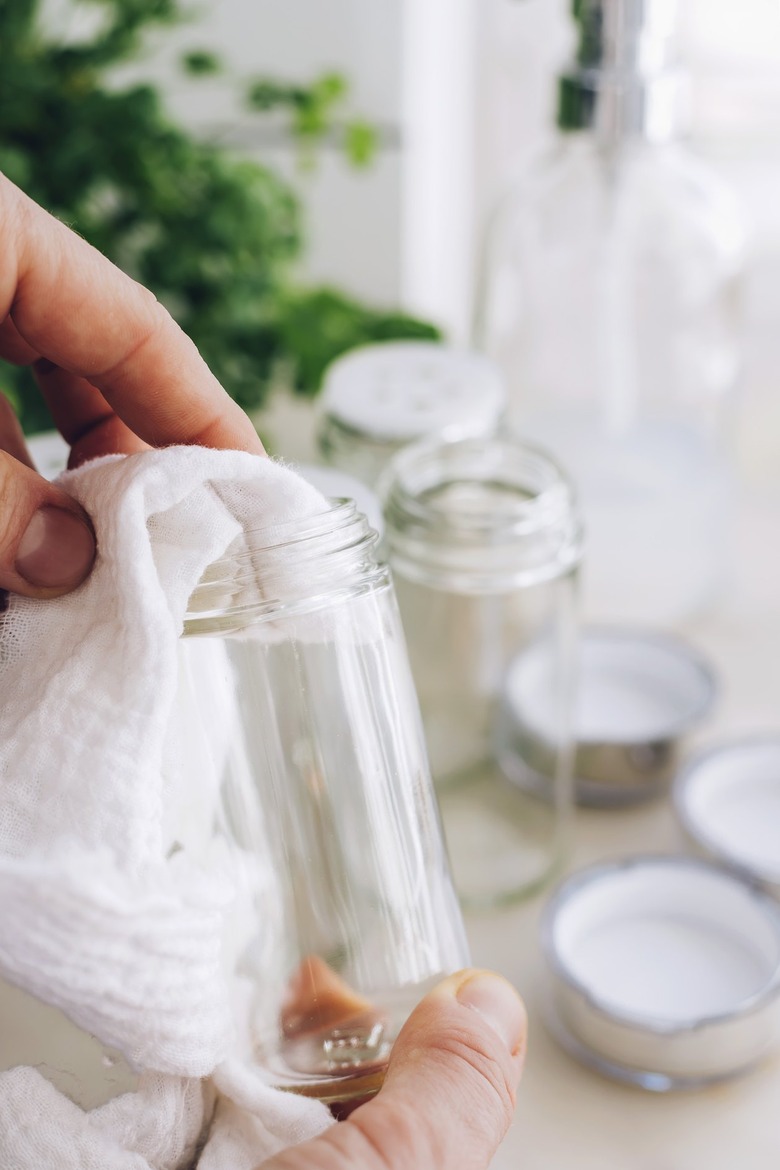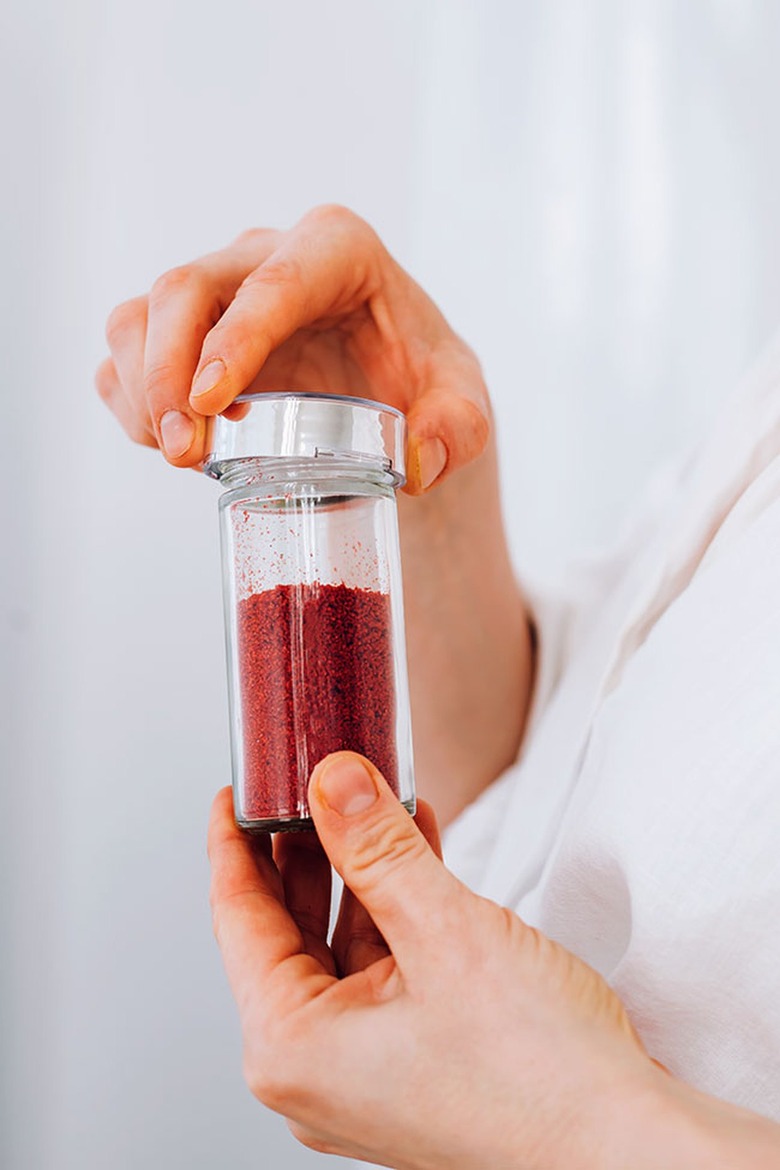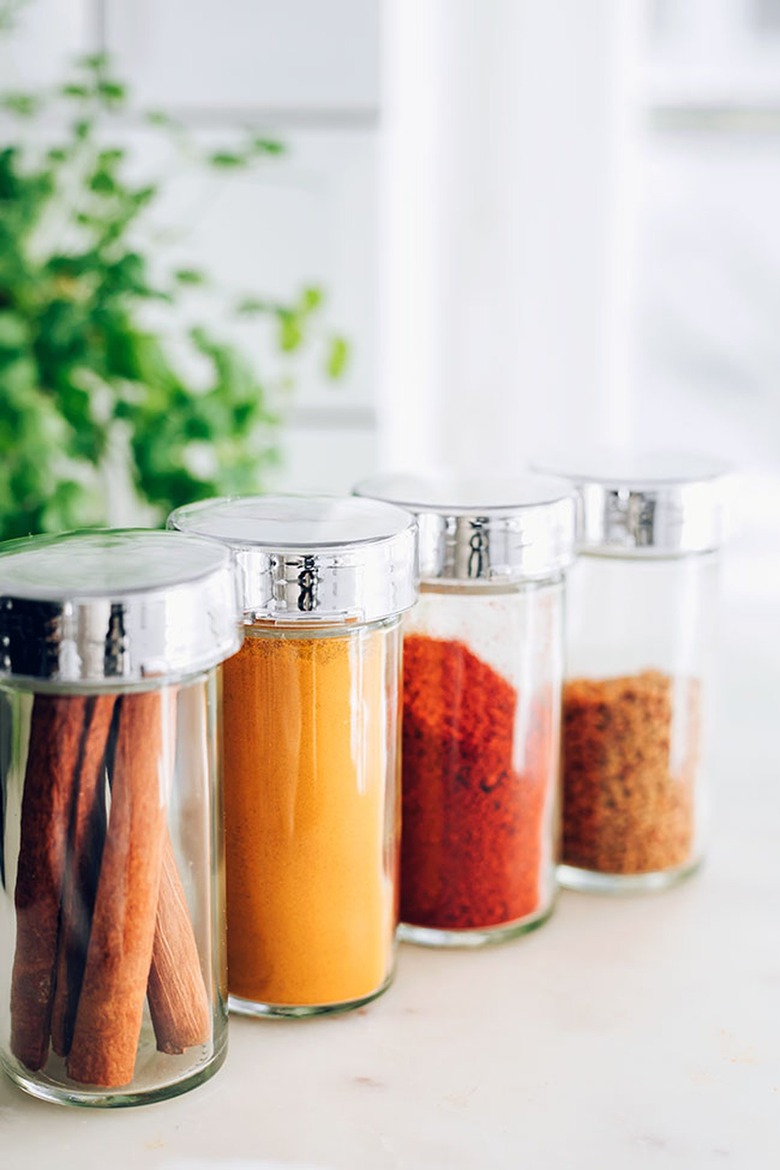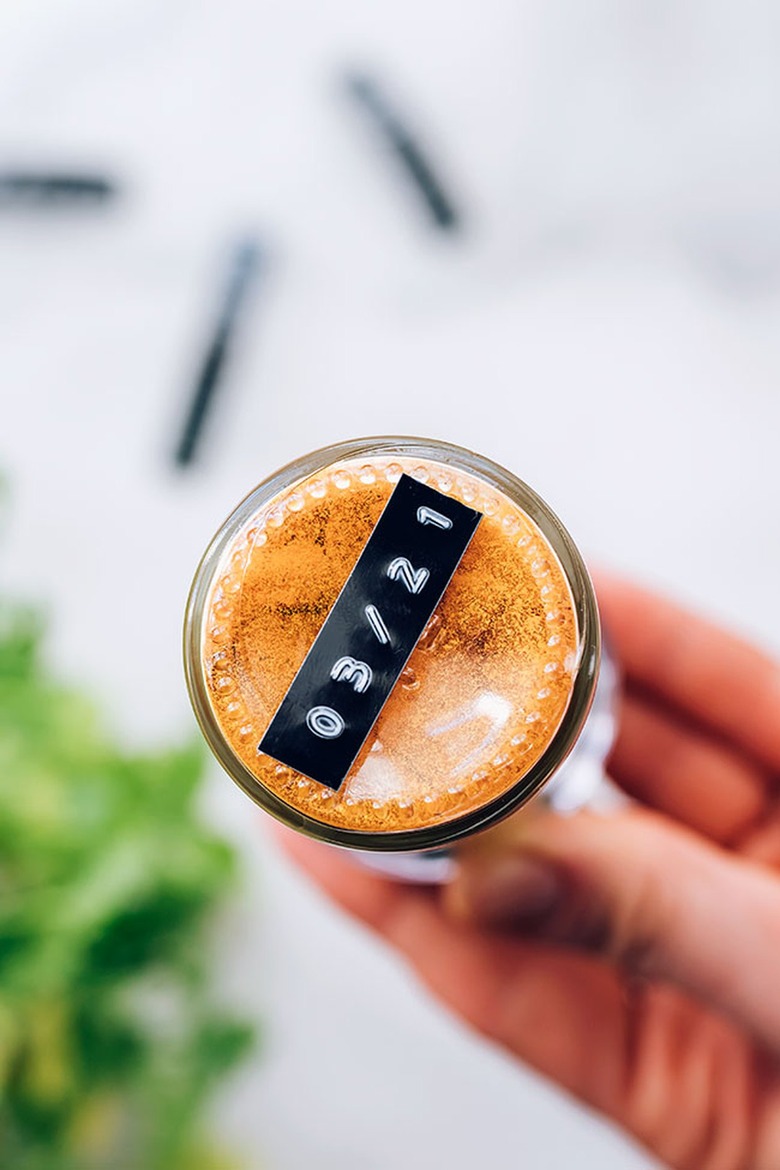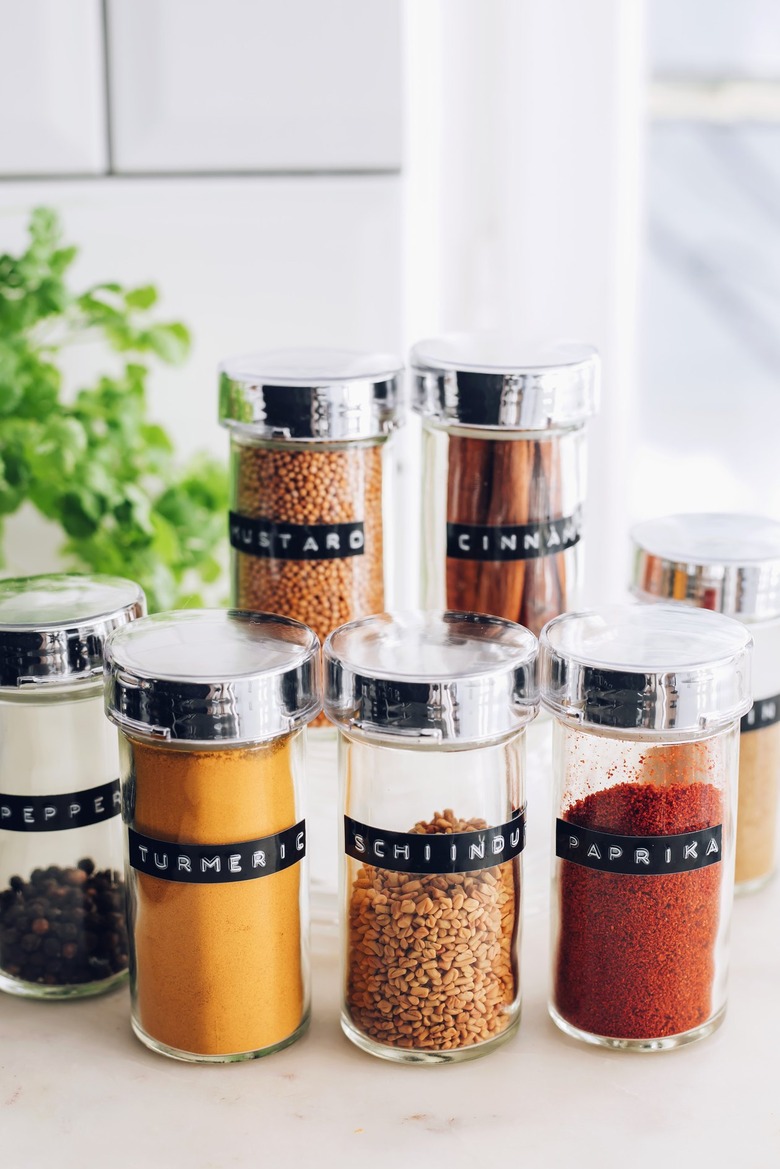Your Spice Rack Needs To Be Cleaned, So Here's What To Do
Got an overload of dried herbs and spices taking up space in your cabinet or pantry? It's time to give it a deep clean and get it organized.
It's a pretty simple task to get your spice rack under control — as long as you're willing to ruthlessly weed out the old and unused. Then, it'll be easier to find the herbs and spices that you do use, and it'll also make it easier to keep things clean and tidy to avoid spills that can attract bugs to your pantry.
Take Everything Out
Take Everything Out
First, remove everything from your spice rack or cabinet. It's imperative to be able to see everything that's been hiding in the dark recesses, so pull out all the random jars and bags of ground and whole herbs and spices.
Gather any spices that might be located in other parts of the pantry as well so you can do a full accounting of everything.
Purge
Purge
Alright, here comes the fun part. There's something rather satisfying about tossing old and unused items, so embrace your inner Marie Kondo and get going. A few ways to approach your spice assessment:
Look for an Expiration Date
Check the bottom of the bottle for an expiration date. If you can't find one printed anywhere, then follow these general guidelines on how long things should last:
- Ground spices: One to two years
- Whole spices: Two to three years
- Herbs: One to three years
- Seasoning blends: One to two years
Use Your Senses
- Look at the color: It should be bright and vibrant.
- Check the scent: Put a bit of the herb or spice in your hand and gently crush it to see if the aroma is still strong.
- Taste it: This might be obvious, but you can taste test your herbs and spices. Sample a tiny bit to see if the flavor is still potent.
Do You Use It?
Can't remember the last time you used a particular herb or spice? That's a pretty good sign it's time to toss it.
Clean Bottles and Shelves
Clean Bottles and Shelves
After purging, give everything a good cleaning before putting things back together.
Now is a great time to get a new set of spice containers. Everything the same size and shape definitely makes it easier to find what you're looking for, and it's a handy way to store any whole herbs or spices. Clean any new containers with soap and water and make sure they are completely dry before using to avoid mold growth.
Wipe down any spice bottles that you plan to keep and reuse. Use a wet rag and a kitchen cleaner to clean the shelves, racks, or drawers where spices are stored. Gather up any crumbs or spills to avoid attracting pantry pests.
Store Properly
Store Properly
Take a moment to think about where and how you want to store your herbs and spices. They should be kept away from heat, moisture, and direct sunlight. (For instance, a cabinet above the stove might not be the best spot.)
To keep spices fresh, make sure the containers are airtight and replace the lids immediately after using.
Decide How to Organize
Decide How to Organize
Now that your jars are tidy and you have the perfect spot to store them it's time to think about how you want to use them. Rather than shoving everything together haphazardly, consider a couple of storage options:
- Alphabetically: It will take a bit of maintenance, but this method will definitely save time in the long run.
- By usage: If you find yourself always looking for the same groups of herbs or spices, why not keep them together? A couple of examples:
- Everyday spices: The basic spices you use most commonly in cooking.
- Baking spices: Group spices like cinnamon, nutmeg, and clove together.
- Salts and blends: Make these easy to find for seasoning meat, marinades, and the like.
- Less common spices: Group the herbs or spices you rarely use but can't quite let go of.
Restock and Label
Restock and Label
Buy replacements for any commonly used spices that were past their prime. An easy way to keep track of dates going forward is to put an easy-to-read label or small piece of masking tape on the bottom of the bottle with the date of purchase.
Open your spice rack and smile — yes, an efficient system feels good! Plus the thorough deep clean will help spices stay fresh longer, and taking the time to organize them will make cooking easier.
